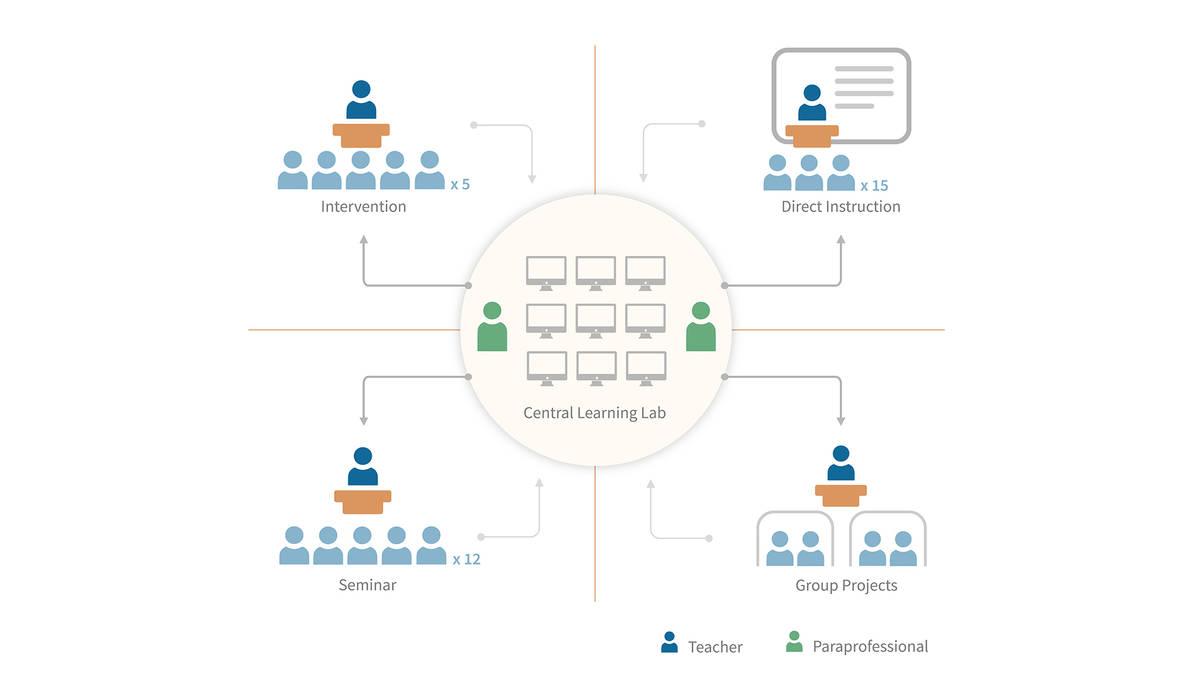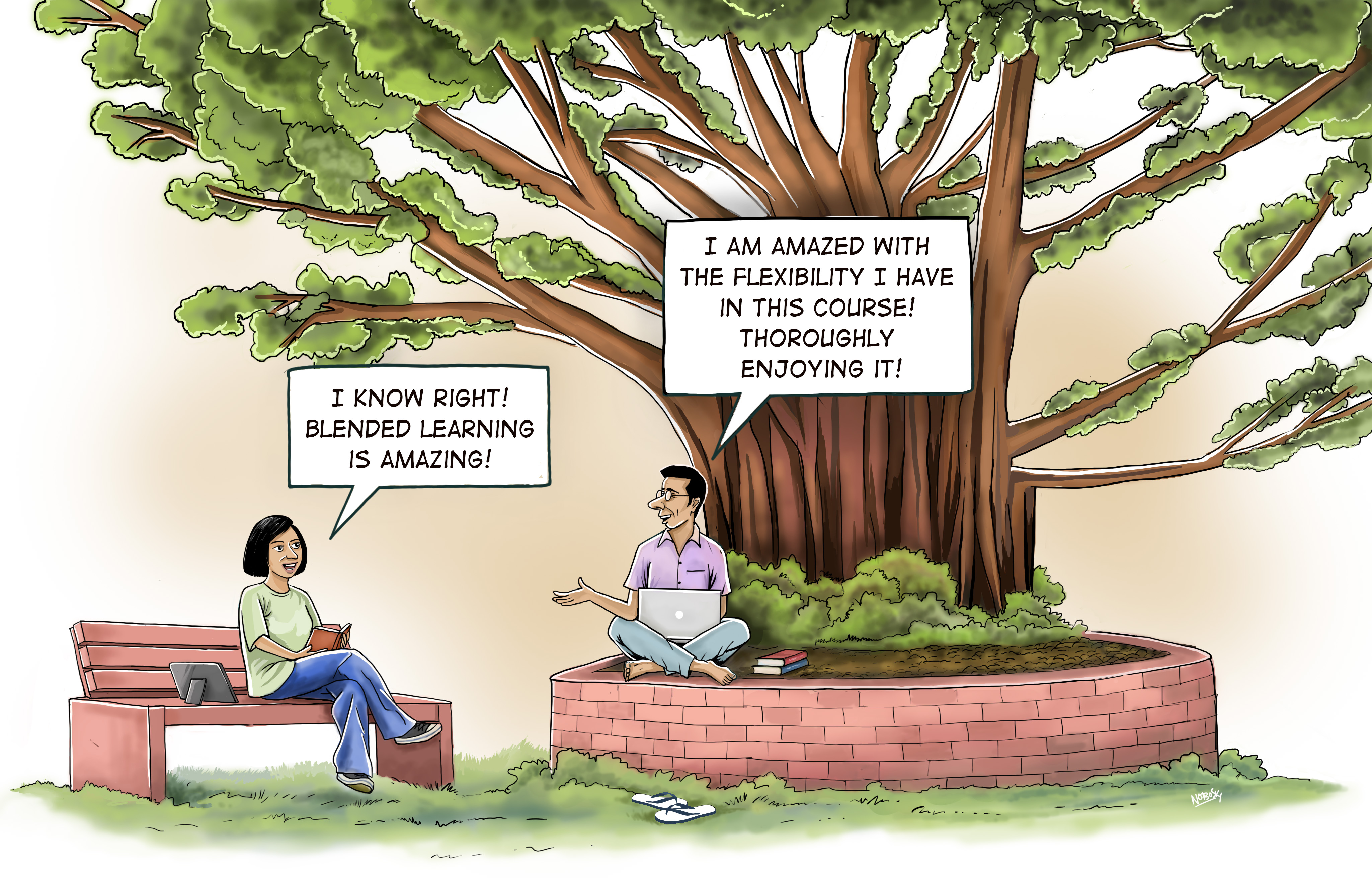Approach to Blended Learning: Framework, Models and Strategies
Blended learning, simply put, can be defined as an approach to learning that combines in-person and online instruction. In an increasingly hybrid world, blended learning is fast becoming an important tool for not just educational institutions but also workplaces looking to retain their competitive advantage by investing in the continuous capacity building of employees.
This is the second post in a three part series dedicated to examining blended learning as a possible solution to challenges associated with capacity building of public officials. The first post in this series explored how traditional Indian learning systems combine different instructional styles to successfully impart competencies. It also made an argument for incorporating the underlying principles of some of these learning systems into modern-day blended learning solutions. This post makes a case for blended learning by unpacking its various components and exhibiting its potential as an effective instructional methodology. It also underlines the interventions initiated by the government to address learning challenges.
Blended learning frameworks
Most modern blended learning solutions have three components: a technology-enabled component, an in-person component and a collaborative learning component. The integration of these individual components is informed by factors such as the learners' context, technological constraints and so on.

Blended learning is a fundamental redesign that transforms the structure of, and approach to, teaching and learning. It is a systemic design change that requires a holistic view. To meet this end several concepts and frameworks are there in the global space. The Community of Inquiry (CoI) framework is one such example. This framework is highly regarded among practitioners and based on the concepts of social presence, cognitive presence and teaching presence.

Source: University of Denver, Office of Teaching and Learning
The COI framework enables interaction and cooperation among learners and facilitators (social presence and teaching presence) through active sharing and feedback loops. It also empowers the learner to engage effectively with the content (cognitive presence) by relating it to previous experiences and applying new knowledge while solving real-world problems.
The framework is based on the assumption that learning experiences have both reflective (private) and interactive/collaborative (social) aspects. Further, learning experiences are constructed, shaped and enhanced through purposeful and flexible interactions in the community. Hence, the COI model’s foremost emphasis is on developing the community that supports the learning process through sustained communication and collaboration and where learners share their experiences and insights.
Blended learning strategies
While blended learning frameworks are useful for designing learner experiences, blended learning strategies are direct interventions. These are used to operationalise the concepts that underlie said frameworks.
There are several types of blended learning strategies (also referred to as models) in use, such as Individual Rotation Model, Flipped-Classroom Model, Station Rotation Model and Lab Rotation Model. The Individual Rotation Model is used here to illustrate the workings of a blended learning strategy. Within this model, learners are matched with personalised learning pathways by the facilitator based on their needs and preferences. Learners then rotate (or switch) according to a personalised schedule between various learning modalities (such as direct interaction, knowledge sharing, co-creation and self-reflection).

Source: Blended Learning Universe
Additionally, learners engage with peers and facilitators, either synchronously (at the same time) or asynchronously (at different times). Personalised learning pathways empower learners to learn at their own pace while benefiting from access to a wide variety of learning modalities, each suited to the specific learning objectives of a program.
Ongoing Government Initiated Programmes: An Overview
Recently, the Indian government has placed a significant emphasis on digital learning, particularly during the COVID and post-COVID period. This is a positive development, and several initiatives have been implemented, such as iGOT and DIKSHA, as well as the use of radio and community radio in the CBSE podcast named Shiksha Vani. The use of multiple learning modalities sets these initiatives apart and underlines the transition of government led programs towards blended learning. These changes are important in finding solutions to the increasing pressure faced by government officials to respond effectively and efficiently to citizens' expectations. The Institute of Secretariat Training and Management (ISTM) has restructured the foundation training program for Assistant Section Officers (ASOs) to accommodate competency-based capacity building of new recruits, increasing the duration from 12 to 108 weeks. Additionally, the FutureSkills Prime platform, which is a partnership initiative between the Ministry of Electronics and Information Technology, the Government of India, NASSCOM, and the IT industry, offers a comprehensive skilling ecosystem focused on emerging technologies with around 240 expertly curated and industry-relevant courses.
Conclusion
Blended learning strategies can vary from self-directed and on-demand personalised learning to cohort-based live virtual learning. The above considerations while designing blended learning mark a decisive shift in how some of the foremost challenges in designing a learner-centred, applied and holistic learning environment are addressed. Blended learning approaches consider, adopt and leverage the enormous potential of information and communication technologies to overcome limitations of conventional methods.
The last post in this series will discuss the aspirations of Mission Karmayogi and how it seeks to address the current challenges of the public sector capacity building ecosystem. The post will also introduce the Phygital tool which is inspired by the guiding principles of Mission Karmayogi and has been designed to assist in reviewing and redesigning in-person programs to convert them into blended learning or ‘phygital’ solutions.

.jpg)

Add new comment